[ad_1]
Get the best data-driven crypto insights and analysis every week:
By: Tanay Ved & Matías Andrade Cabieses
-
The aggregate supply of stablecoins issued has expanded to $189B, with Tether’s USDT represents $125B (66% of total supply), while stablecoins issued on Ethereum account for $104B, or (55% of total supply).
-
Beyond serving as a store of value, stablecoins are crucial as a medium of exchange in bull-markets. Stablecoin denominated trading volumes across major exchanges surged to $120B post-election, with top trading pairs including BTC, ETH, SOL & memecoins.
-
On-chain activity trended higher as adjusted stablecoin transfer volumes (USD) crossed $50B in November. Solana stablecoins hit an all-time high in stablecoin transactions, driven by USDC usage.
-
Ethena’s USDe and staked USDe (sUSDe) saw rapid growth since Q3, fueled by bullish market conditions and rising funding rates, showcasing the evolving yield-driven dynamics of stablecoins.
As the crypto market enters a bullish phase, stablecoins have resumed their ascent, with over $189B in stablecoins issued. This influx suggests an environment with growing liquidity, as users position themselves to capitalize on appreciating prices and emerging opportunities in the on-chain ecosystem. Mergers and acquisitions in the crypto space have heated up, further boosting the sector’s momentum with Stripe’s acquisition of Bridge—a stablecoin payments platform—for $1.1B in October, and Coinbase’s acquisition of Utopia Labs. Stablecoins continue to be a central theme across the financial landscape, promising to be the backbone of FinTech, payments and the global financial system.
In this week’s issue of Coin Metrics’ State of the Network, we take a data-driven dive into the stablecoin sector, exploring its pivotal role as a medium of exchange in bull markets and analyze on-chain adoption across key metrics.
The stablecoin landscape continues to expand in depth and breadth. Following the remarkable profitability of incumbents like Tether, there has been no shortage of traditional financial and crypto-native issuers, resulting in a constant influx of stablecoins entering the market. At the same time, stablecoins are establishing a wider footprint cross-chain, especially as alternative Layer–1 and Layer–2 ecosystems mature. As a result, Coin Metrics’ stablecoin coverage has expanded to over 35 stablecoins and counting.
Source: Coin Metrics Network Data Pro
With a total supply of $125B, Tether’s USDT continues to maintain the lion’s share of stablecoins issued with a 66% market share. Circle’s USDC is second to follow, with $36B in total supply and a 19% market share. In terms of networks, Ethereum is the largest blockchain by stablecoins issued, home to $104B (55%) of total stablecoin supply. Tron continues to maintain a substantial 33% in network share of stablecoin supply, driven primarily by USDT. Solana and Ethereum Layer-2 networks (Arbitrum, Base, Optimism) collectively represent ~7.5% of the total stablecoin supply, reflecting their growing but still emerging stablecoin ecosystem.
Source: Coin Metrics Network Data Pro & Coin Metrics Labs
As one of its earliest use-cases, stablecoins have provably garnered utility in their role as a medium of exchange, both in bull and bear markets. In an upwards trending market, stablecoins are a bridge through which users can gain exposure to other tokens in the ecosystem, serving as a source of liquidity essential to facilitate on-chain and trading activity. In market downtrends or during periods of volatility, they also serve as a store of value or means of savings, enabling users to store wealth or earn yield from on-chain and off-chain sources. This makes stablecoins essential under various market conditions, geographies and time-zones.
Source: Coin Metrics Market Data Feed
With the crypto market’s rise post-election, stablecoin denominated trading volumes across exchanges crossed $120B as trading activity ramped up. Of this total, Tether’s USDT accounted for ~80% or $95B in spot volumes recorded on November 12th. First Digital USD (FDUSD) also gained significant traction, spiking to $16 billion in daily spot volumes (~17% of the total), while Circle’s USDC reached $11 billion, marking its highest weekly average spot volume to date.
Source: Coin Metrics Market Data Feed
We can further drill down into specific stablecoins and crypto-assets that drove activity in November. Large-cap assets like BTC, ETH, and SOL, alongside memecoins like DOGE and PEPE, feature prominently among the top 10 pairs by trading volume across exchanges. While the dominance of majors is unsurprising, the influence of memecoins suggests heightened retail participation as BTC establishes new price highs. Consequently, the “Specialized Coins” sector in datonomy™, which consists of meme coins, privacy coins, and remittance coins, emerged as the top-performing sector, delivering 63% returns over the past 30 days.
While stablecoins play an influential role as a medium of exchange and source of liquidity on exchanges, they are also fundamental to non-trading use cases, such as facilitating transactions and settling economic value on-chain. Stablecoins serve as an ideal instrument for consumer and B2B payments, remittances, saving wealth, or to seek economic stability and access to financial infrastructure, especially in emerging markets.
With the help of some on-chain metrics, we can better understand how stablecoin driven economic activity has evolved over time, and the extent to which they influence usage on different public blockchains.
Source: Coin Metrics Network Data Pro
The weekly adjusted transfer volume involving transfers of native units between distinct stablecoin addresses exceeded $50B in November. Of this, $18.2 billion (38%) originated from USDT on Tron, and $12.3 billion (23%) from USDT on Ethereum, both setting record highs for transaction volume. USDC on Ethereum and Solana also demonstrated greater traction, with a growing trend in transfer volumes.
Source: Coin Metrics Network Data Pro
Notably, stablecoin transactions on Solana hit an all-time high of 3.86M in November. USDC continues to be the stablecoin of choice on Solana, representing 83% of all stablecoin related transactions on the network. As a result of Solana’s low transaction fees, USDC on the network has a median transfer size of $20, compared to $1,400 on Ethereum. This contributes to Solana’s higher transaction count, with 3.86M stablecoin transactions in November, substantially higher than Ethereum’s 230K transactions despite Ethereum’s deeper stablecoin liquidity.
There are several other metrics we can leverage to understand stablecoin activity on-chain, including the supply held by smart contracts and externally owned accounts (EOAs), stablecoin velocity (turnover), active addresses, the number of addresses holding more than a specific amount of stablecoins, and supply distribution. These metrics can be explored further through this stablecoin dashboard created with our charting tool.
Another avenue that drives demand for stablecoins is the provision of yield, which can serve as a form of passive income or risk management in both bull and bear markets. To compete on adoption with giants like Tether & Circle, several stablecoin issuers incentivize stablecoin growth by passing on interest to holders, enhancing their store of value properties. This spans various approaches and risk profiles, from passing a portion of yield generated on off-chain real-world assets (RWAs) such as US Treasuries or on-chain collateral assets like staked ETH or in some cases, revenue generated from operations tied to on-chain protocols (in the case of protocol issued stablecoins).
Ethena has brought a relatively new approach to yield generation for its synthetic dollar—USDe, dubbed the “Internet Bond.” It combines hedging strategies on centralized exchanges with staking rewards to generate yield while maintaining peg stability. Crypto-assets are used as collateral (BTC, ETH), to open short positions in perpetual futures markets, aiming to benefit from positive funding rates. In combination with the funding and basis spread, Ethena passes on the yield from ETH staking rewards in the form of a interest-bearing token—sUSDe.
Source: Coin Metrics Network Data Pro
Notably, there is a close relationship between USDe supply and ETH funding rates across exchanges. The supply of USDe and staked USDe (sUSDe) has grown in environments with positive funding rates and declined or stagnated when funding rates turned negative. Interestingly, Ethena recently announced plans to launch USTb, a new stablecoin collateralized by BlackRock’s tokenized US Treasury fund, BUIDL. This stablecoin is intended to function as a backing asset to USDe, helping manage risk during periods of market volatility that result in weak funding rates. As the stablecoin that has grown the most since Q3, Ethena is well-positioned to capitalize from rising funding rates.
Stablecoins remain a cornerstone of the digital asset ecosystem, driving liquidity, facilitating payments, enabling on-chain economic activity, and serving as a tool for savings and wealth preservation. Based on several metrics, stablecoins continue to display growth in adoption and usage, proving their widespread demand and utility. s stablecoins gain traction, regulatory clarity in areas like reserve transparency and issuance standards will drive innovation across the ecosystem and fuel the growth of stablecoin-related businesses. With positive regulatory efforts advancing in the U.S. and globally, the stage is set for the next phase of stablecoin growth, potentially rewiring the financial ecosystem.
Source: Coin Metrics Network Data Pro
Post-election market momentum continued over the past week, with the market cap of Bitcoin and Ethereum increasing by 20% and 12%, respectively. Active addresses for Dogecoin surged by 337%, while its market cap rose by 84% to $54B.
This week’s updates from the Coin Metrics team:
-
Follow Coin Metrics’ State of the Market newsletter which contextualizes the week’s crypto market movements with concise commentary, rich visuals, and timely data.
As always, if you have any feedback or requests please let us know here.
Coin Metrics’ State of the Network, is an unbiased, weekly view of the crypto market informed by our own network (on-chain) and market data.
If you’d like to get State of the Network in your inbox, please subscribe here. You can see previous issues of State of the Network here.
© 2024 Coin Metrics Inc. All rights reserved. Redistribution is not permitted without consent. This newsletter does not constitute investment advice and is for informational purposes only and you should not make an investment decision on the basis of this information. The newsletter is provided “as is” and Coin Metrics will not be liable for any loss or damage resulting from information obtained from the newsletter.
[ad_2]
Read More: coinmetrics.substack.com

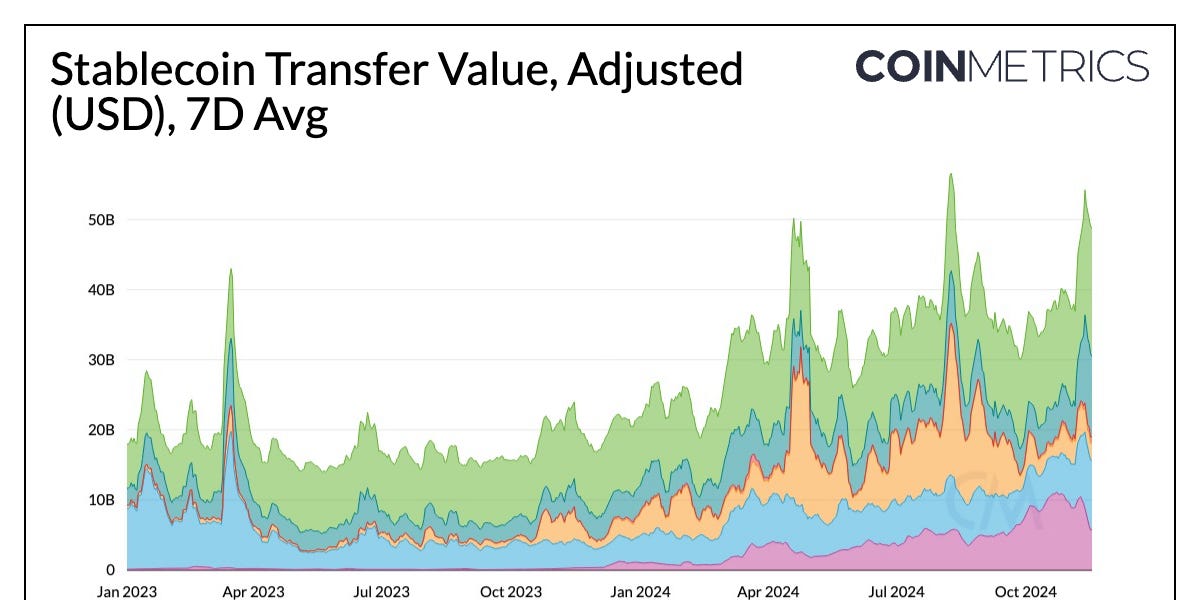

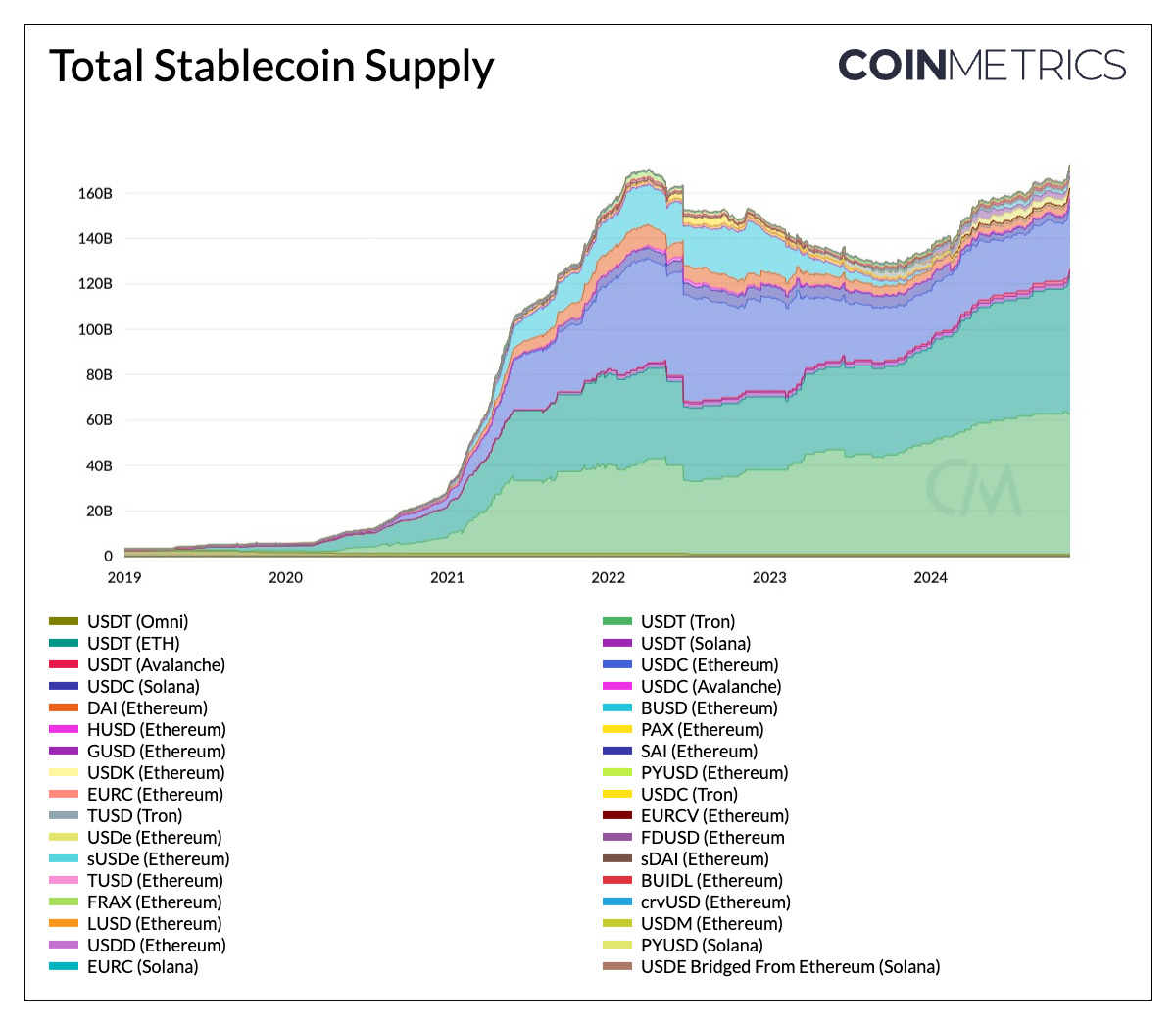
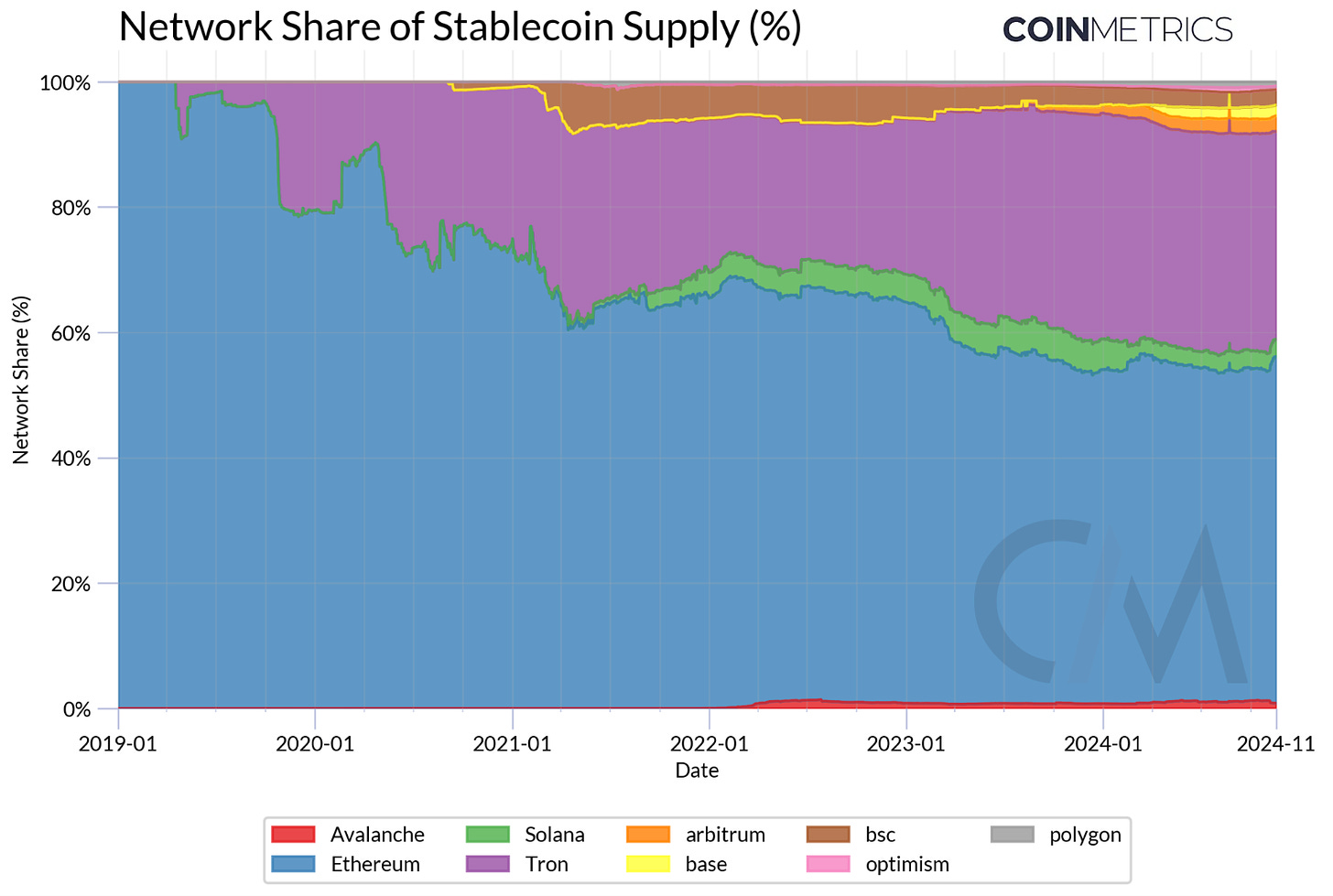
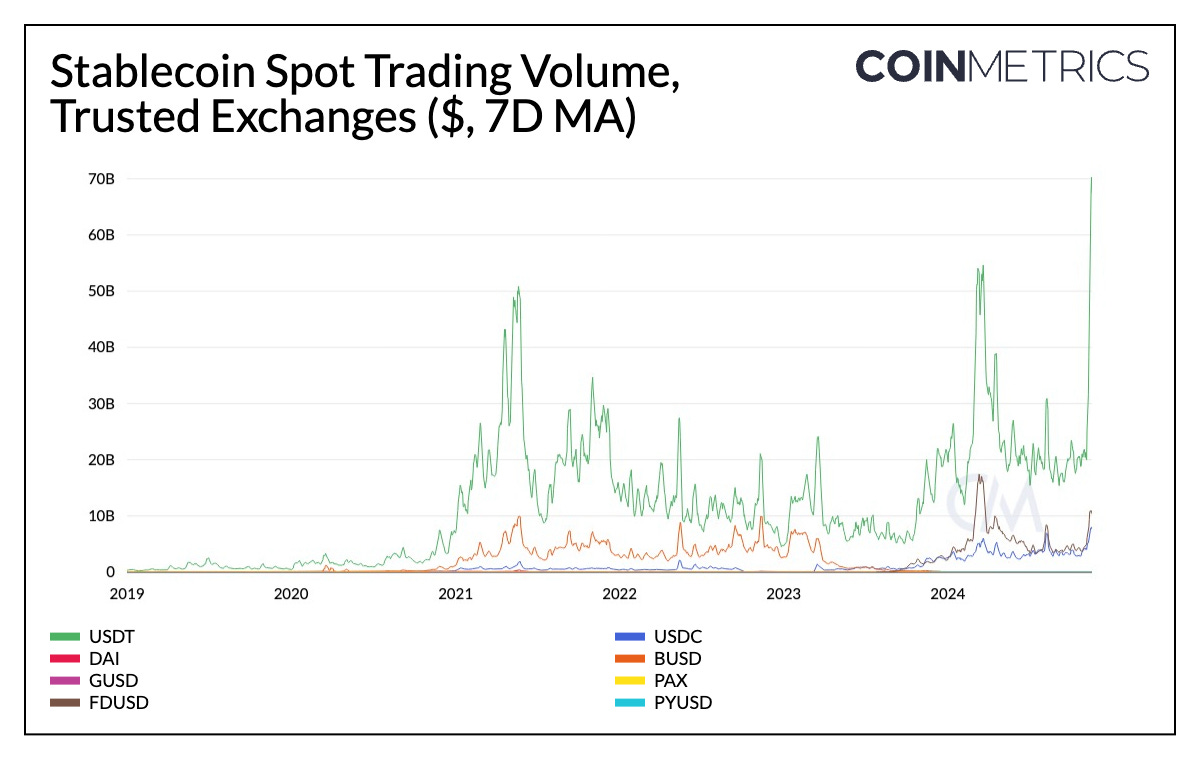
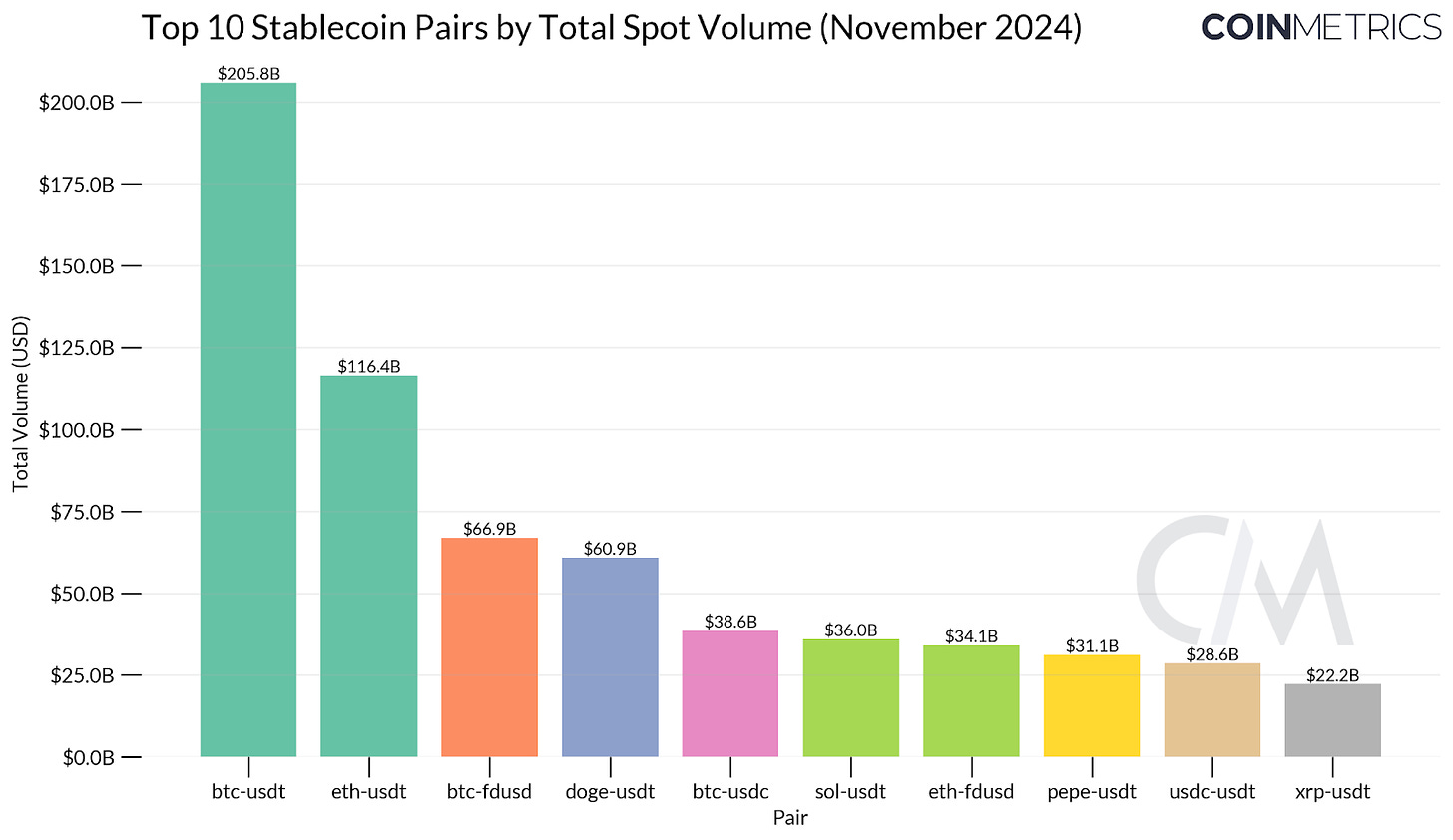
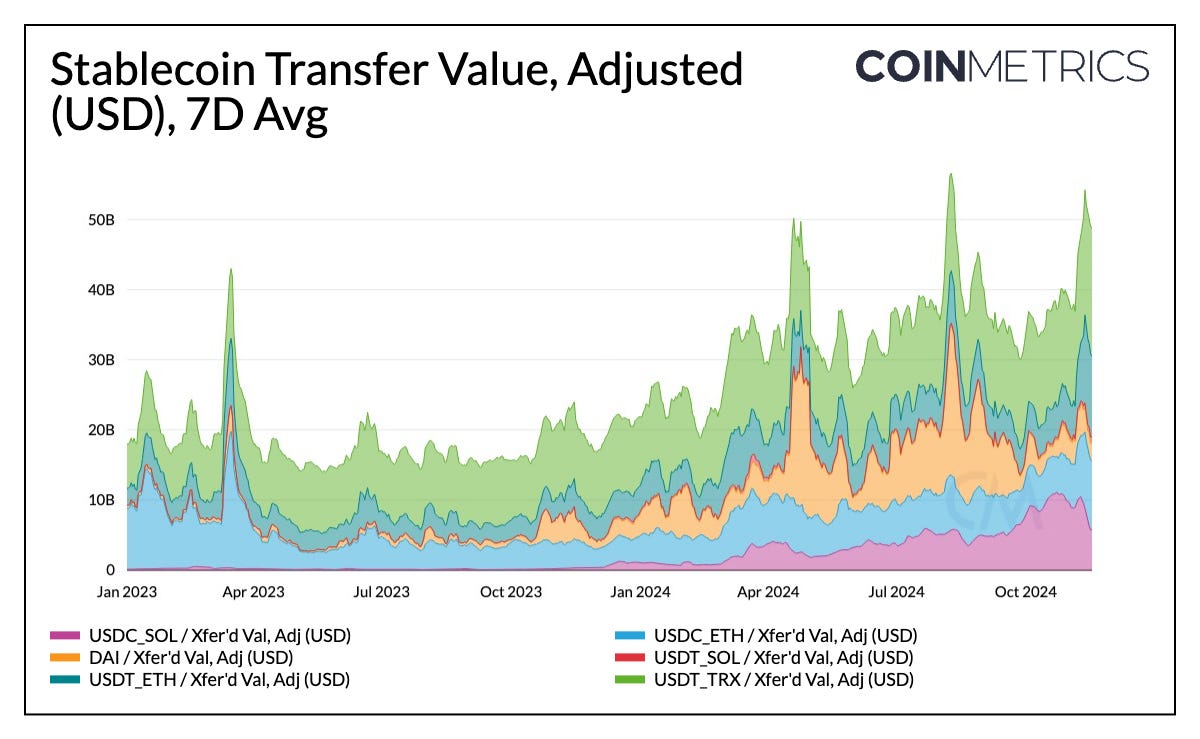
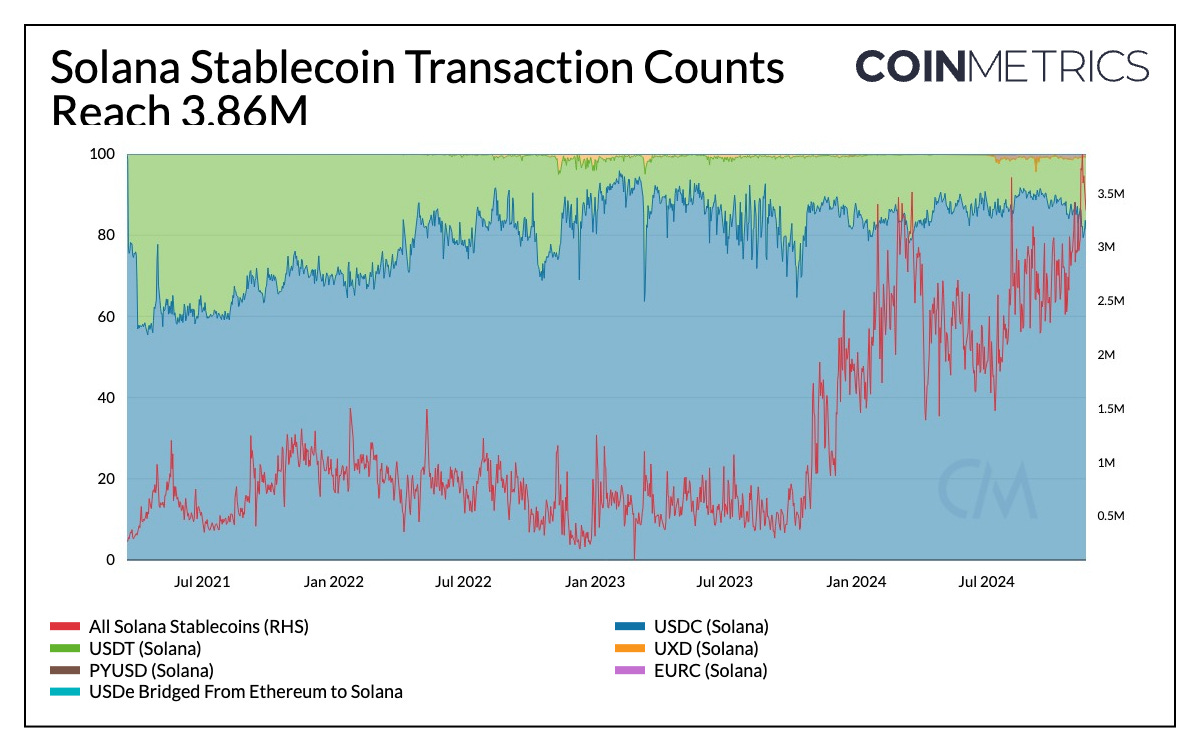
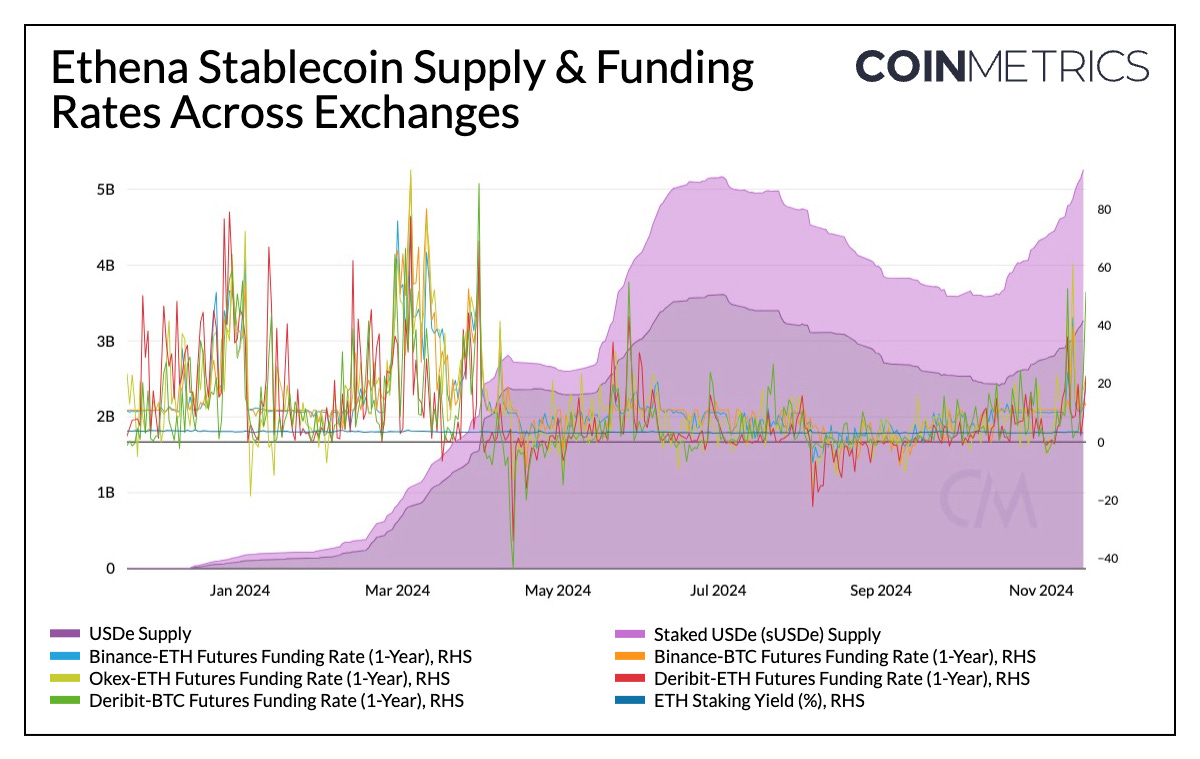
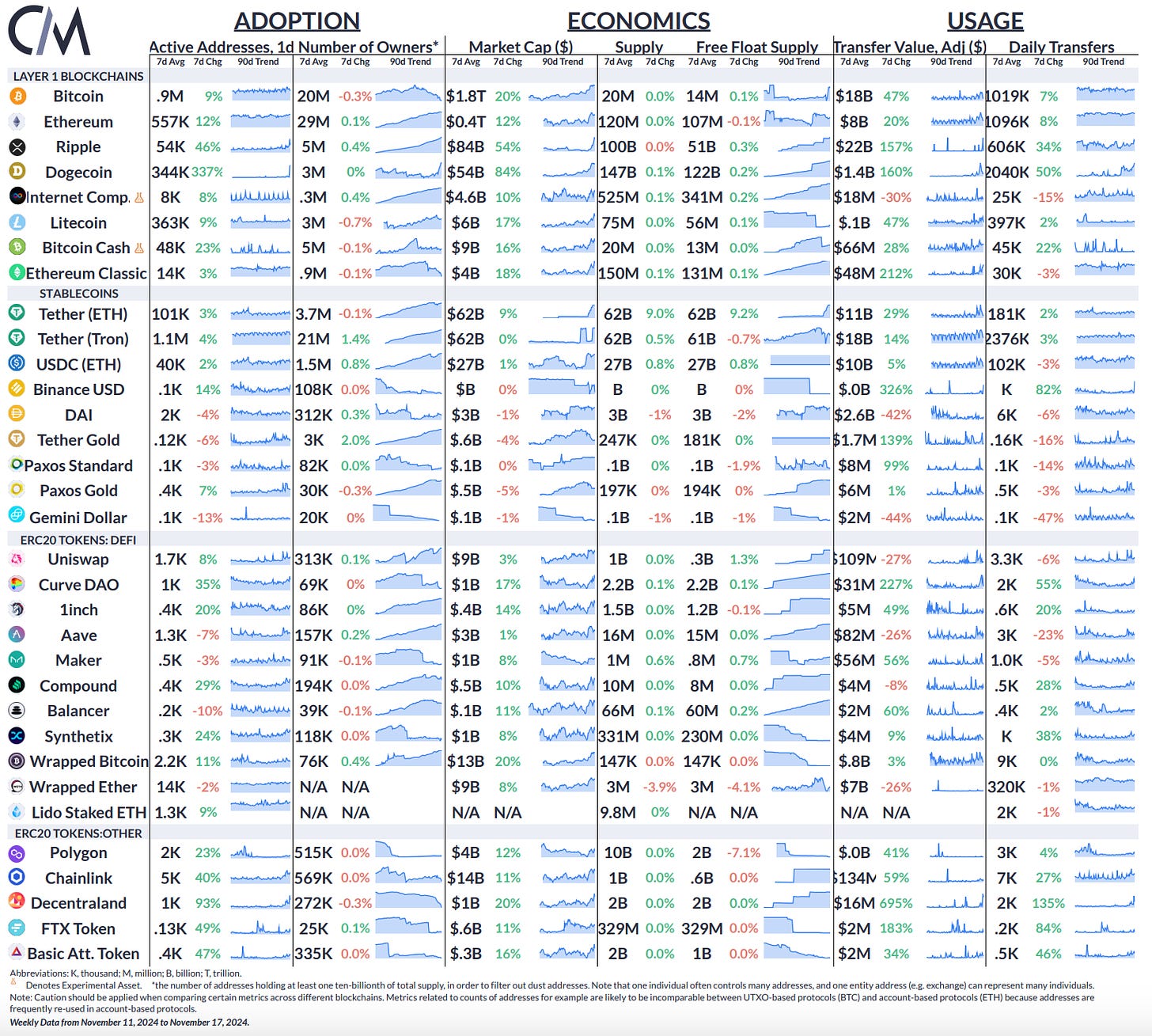







 Bitcoin
Bitcoin  Ethereum
Ethereum  Tether
Tether  XRP
XRP  Solana
Solana  USDC
USDC  TRON
TRON  Dogecoin
Dogecoin  Lido Staked Ether
Lido Staked Ether  Cardano
Cardano  Wrapped Bitcoin
Wrapped Bitcoin  Hyperliquid
Hyperliquid  Wrapped stETH
Wrapped stETH  Sui
Sui  Bitcoin Cash
Bitcoin Cash  LEO Token
LEO Token  Chainlink
Chainlink  Stellar
Stellar  Avalanche
Avalanche  Toncoin
Toncoin  USDS
USDS  WhiteBIT Coin
WhiteBIT Coin  Shiba Inu
Shiba Inu  WETH
WETH  Wrapped eETH
Wrapped eETH  Litecoin
Litecoin  Binance Bridged USDT (BNB Smart Chain)
Binance Bridged USDT (BNB Smart Chain)  Hedera
Hedera  Monero
Monero  Ethena USDe
Ethena USDe  Polkadot
Polkadot  Bitget Token
Bitget Token  Coinbase Wrapped BTC
Coinbase Wrapped BTC  Uniswap
Uniswap  Pepe
Pepe  Pi Network
Pi Network  Aave
Aave  Dai
Dai  Ethena Staked USDe
Ethena Staked USDe  Bittensor
Bittensor  BlackRock USD Institutional Digital Liquidity Fund
BlackRock USD Institutional Digital Liquidity Fund  OKB
OKB  Cronos
Cronos  Aptos
Aptos  Internet Computer
Internet Computer  NEAR Protocol
NEAR Protocol  Jito Staked SOL
Jito Staked SOL  sUSDS
sUSDS  Ethereum Classic
Ethereum Classic